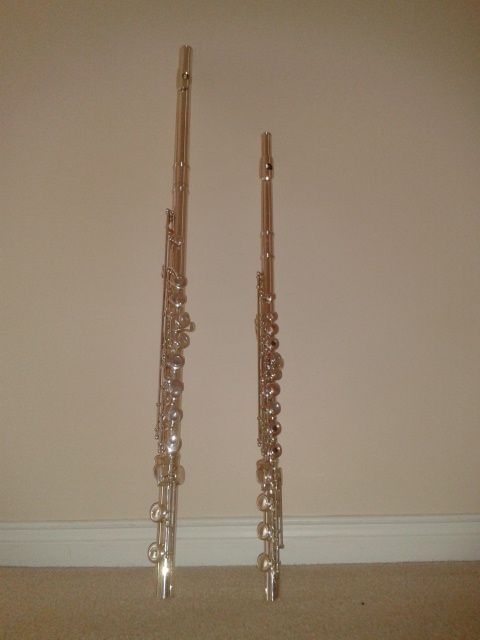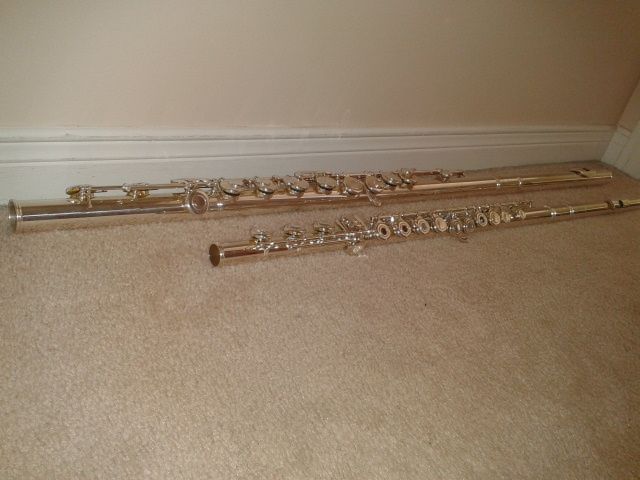I have acquired an alto flute as a year long rental because I need it for school. It's a transposing instrument, tuned in G instead of C (as the regular flute is), and it has a great sound! I love it and hope to have one of my own one day. The cheaper ones cost about $5,000. The retail price of this particular one is about $8,000.
Size comparison with my own regular C flute:


There is also the option of using a curved head joint, as on the bass flute, but I don't like that feeling on the alto. So I use the straight head joint because it's more comfortable for me.








 Threaded Mode
Threaded Mode